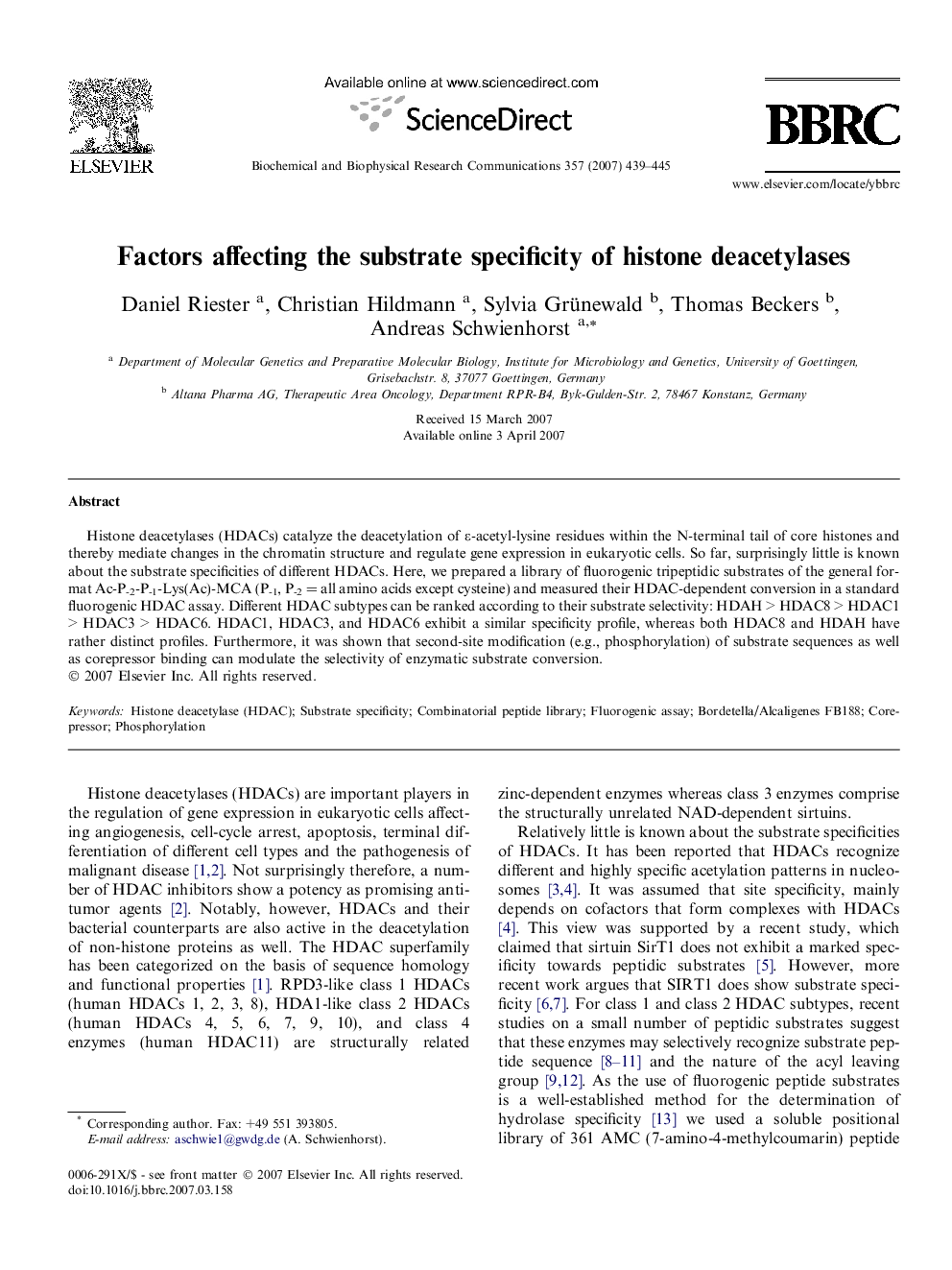| Article ID | Journal | Published Year | Pages | File Type |
|---|---|---|---|---|
| 1937615 | Biochemical and Biophysical Research Communications | 2007 | 7 Pages |
Histone deacetylases (HDACs) catalyze the deacetylation of ε-acetyl-lysine residues within the N-terminal tail of core histones and thereby mediate changes in the chromatin structure and regulate gene expression in eukaryotic cells. So far, surprisingly little is known about the substrate specificities of different HDACs. Here, we prepared a library of fluorogenic tripeptidic substrates of the general format Ac-P-2-P-1-Lys(Ac)-MCA (P-1, P-2 = all amino acids except cysteine) and measured their HDAC-dependent conversion in a standard fluorogenic HDAC assay. Different HDAC subtypes can be ranked according to their substrate selectivity: HDAH > HDAC8 > HDAC1 > HDAC3 > HDAC6. HDAC1, HDAC3, and HDAC6 exhibit a similar specificity profile, whereas both HDAC8 and HDAH have rather distinct profiles. Furthermore, it was shown that second-site modification (e.g., phosphorylation) of substrate sequences as well as corepressor binding can modulate the selectivity of enzymatic substrate conversion.
